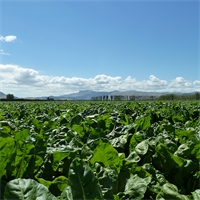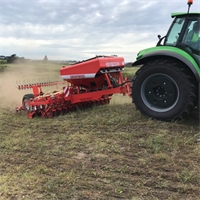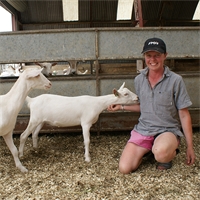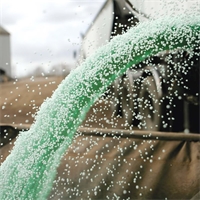25Nov
Summer Agri-Chemical Update
Words supplied by Bill Cabout, Ruralco Assistant Retail Manager.
For the next three months we are looking at the final sprays for finishing off our cereal and grass seed crops, getting our silos cleaned up before harvest, continuing our post emergence sprays on fodder beet, pre and post emergence sprays on forage brassicas and weed control in new pasture.
Cereals
Over the next few weeks we are looking at putting on the final fungicide sprays to maintain disease free crops through to harvest.
Wheat. T2 Growth Stage 39
Flag leaf fungicide spray can be applied. Due to the possible disease pressure due to the mixed weather we are having, we should be applying a SDHI fungicide in conjunction with a triazole to protect the flag leaf as a lot of potential yield comes at this time. Follow this at full ear emergence (GS61) with a triazole + strobilurin fungicide to ensure protection from leaf rust.
Barley. T1 Growth stage 31-32.
A lot of spring sown crops will be at, or coming up to this stage. A fungicide spray of a triazole + strobilurin fungicide should be applied now. Autumn sown crops will be coming up to T2 (growth stage 39) at this time and because of the disease pressure from the mixed weather we are having a SDHI and Triazole fungicide should be applied. Follow this at full ear emergence (GS61) with a triazole + strobilurin fungicide.
Grass seed
The main fungicide application timings in perennial ryegrass for stem rust control are based on the implementation of a preventative fungicide programme. The first application must be made prior to disease being visually present in the crop. Thus, the common preventative timings are at PGR application, ear emergence and at flowering with this application also including a fungicide to control blind seed disease.
For all fungicide applications consider the negative effects of fungicides on some novel endophytes and consult your company representative. Be aware of the withholding periods following fungicide application in relation to straw being sold from ryegrass seed crops.
Silo Clean Up
This is the time to get those empty silos ready to accept the new seasons harvest. Silo hygiene is a key element in controlling stored grain pests. Key steps are:
- Remove grain residues from empty silos and grain handling equipment to ensure an uncontaminated start for new-season grain.
- Clean up around silos, removing weeds and rubbish. Mow around the storage facility and ensure easy access to the storage facility. This area can be sprayed with an insecticide to control any overwintering pests.
- When you have completely emptied and cleaned out your silo, we recommend you spray them and all grain handling equipment with an applicable insecticide.
- Once sprayed, we suggest you fumigate them with smoke generators. These are used at one smoke generator per 333 cubic metres (250 t of wheat).
Grain going into the cleaned and fumigated silo should be treated with either insecticide dust or liquid to control pests during storage.
Fodder Beet
Currently most crops have had their first post emergence sprays of both herbicides and insecticides. Over the next few weeks the second post emergence herbicide spray will be applied as well, as sprays to control grass weeds and thistles. To control grass weeds in fodder beet a clethodim should be used. Sequence from Nufarm has a registration for fodder beet with a withholding period of 63 days before grazing. Haloxyfops such as Gallant should not be used in fodder beet due to residue issues. Regular insecticides sprays are needed to control aphids, and a fungicide can also be applied. These should be applied at first sign of disease with a maximum of two sprays per season. Remember to check the withholding period of any products used when starting to graze your crops with fungicides such as Escolta having a 42-day withholding period before grazing.
Forage Brassicas
After planting, a pre-emergence spray is normally applied for weed control. Regular insecticide sprays are also needed to control insect pests. Normally, a post emergence weed spray is required. Be careful what is used at this stage as it can affect what can be grown the following year. This year we have a new product from Corteva for controlling weeds in fodder brassicas called Milestone. This covers a good range of weeds and will be is available in December. Corteva also have a product called Korvetto which was introduced last year. This product has short plant-back periods, excellent crop safety and kills a good range of weeds but needs to be applied when weeds are small.
Forage brassicas are an ideal crop to use IPM (Integrated Pest Management) in. IPM refers to the use of cultural and biological controls as well as selective chemical insecticides that can be used to effectively control pests in crops. Selective insecticides include Transform, Sparta and Exirel. These products only target the pests leaving the beneficial insects such as hover flies, lacewings, ladybirds and others to go about their business of controlling the pests.
New Pastures
It is a good idea to be proactive in controlling weeds in new pastures as your actions during this growth stage can affect the amount of grass produced as well as the longevity of the pasture. There are several different options available depending on your weed spectrum.
With all the above scenarios talk to your local Ruralco representative for the best options for you and your situation.
Related

Fodder beet remains a staple option in our ne w operating environment, where there is a focus on lan...
Read More

To mark World Soil Day on 5 December, Ballance Agri-Nutrients Forage Specialist and no-till advocate...
Read More

Machinery is a fundamental part of our farms and is used daily. But with that hard work comes a fair...
Read More

For a 26 year old Sam Juby has done much with her life, and her biggest challenge yet awaits as she ...
Read More

A visit from South Dakota State University students to Mid Canterbury farms is a win-win.
Read More

“Spring pasture needs both nitrogen and sulphur. A sulphur deficit limits nitrogen uptake, and ther...
Read More